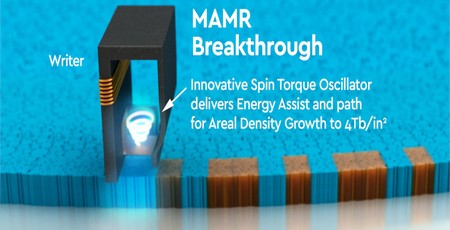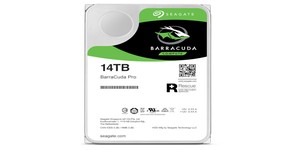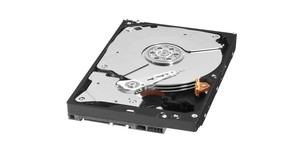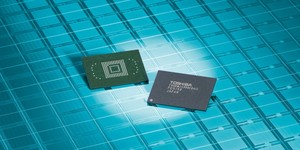Western Digital promises 40TB MAMR drives by 2025
October 12, 2017 | 11:21
Companies: #researchers #western-digital

Western Digital has announced the creation of the world's first hard drive based around microwave-assisted magnetic recording (MAMR) technology, which it claims will allow it to scale standard 3.5" hard drives up to 40TB.
Unveiled by Western Digital's Mike Cordano during a presentation with MAMR inventor Jimmy Zhu, the technology is designed as a replacement for the heat-assisted magnetic recording (HAMR) system rival Seagate first demonstrated back in 2012. Where HAMR uses a micro-miniature laser to heat the area of the magnetic platter before its bit is flipped, though, MAMR - as its name suggests - uses microwaves and a significantly lower temperature target instead. The concept isn't new - the original patent for using heat to increase the stability of magnetically-stored data was granted in 1954, and the technology itself saw brief usage in magneto-optical drives from the 1980s before writeable CDs cornered the market for low-cost write-once mass storage - but Western Digital claims MAMR is now ready for prime time.
'As the volume, velocity, variety, value and longevity of both Big Data and Fast Data grow, a new generation of storage technologies are needed to not only support ever-expanding capacities, but ultimately help our customers analyse and garner insights into our increasingly connected universe of data,' claimed Mike Cordano, president and chief operating officer at Western Digital, during the presentation. 'Our ground-breaking advancement in MAMR technology will enable Western Digital to address the future of high capacity storage by redefining the density potential of HDDs and introduce a new class of highly reliable, 'ultra-high capacity' drives.'
The breakthrough, Western Digital explains, comes from the development of a spin-torque oscillator which is able to generate a microwave field to increase the ability of the magnetic read-write head to address significantly higher areal densities. While the company didn't share the precise density of its prototype design, it did claim that MAMR technology should lead to areal densities of four terabits per square inch (4Tb/in²) and 3.5" hard drives of 40TB capacity 'and beyond' by 2025.
A key factor of MAMR, Western Digital claims, is that it doesn't suffer from reliability and material science challenges which abruptly halted HAMR's areal density expansion plans. How long it will take the technology to reach the market, though, the company isn't sharing. More information on WD's MAMR technology is available from the official website.

MSI MPG Velox 100R Chassis Review
October 14 2021 | 15:04








Want to comment? Please log in.